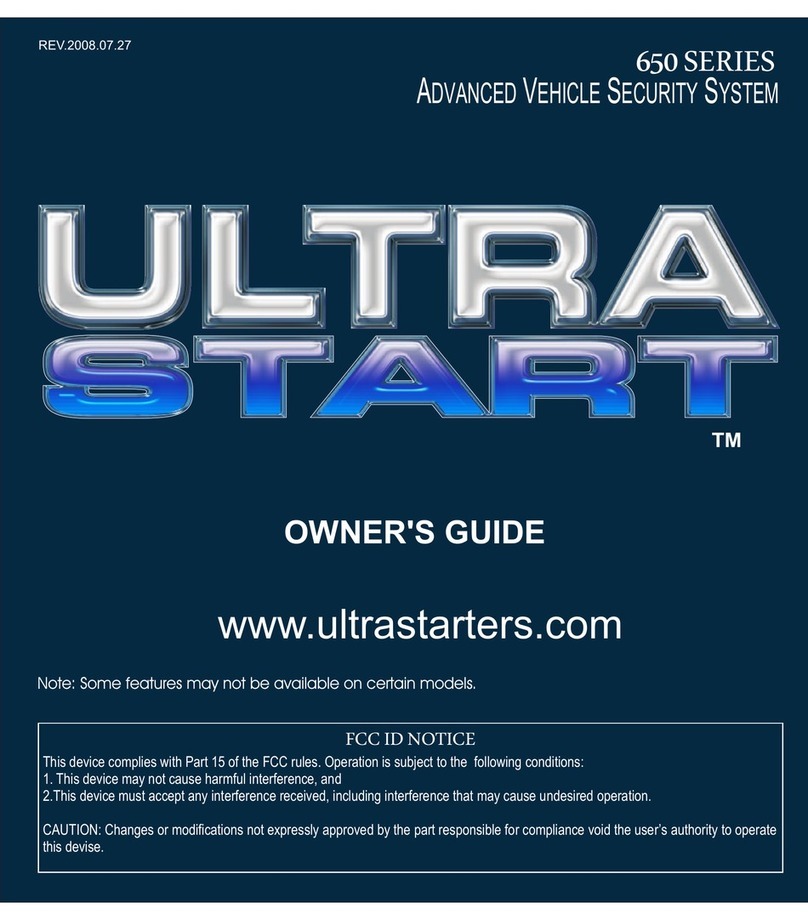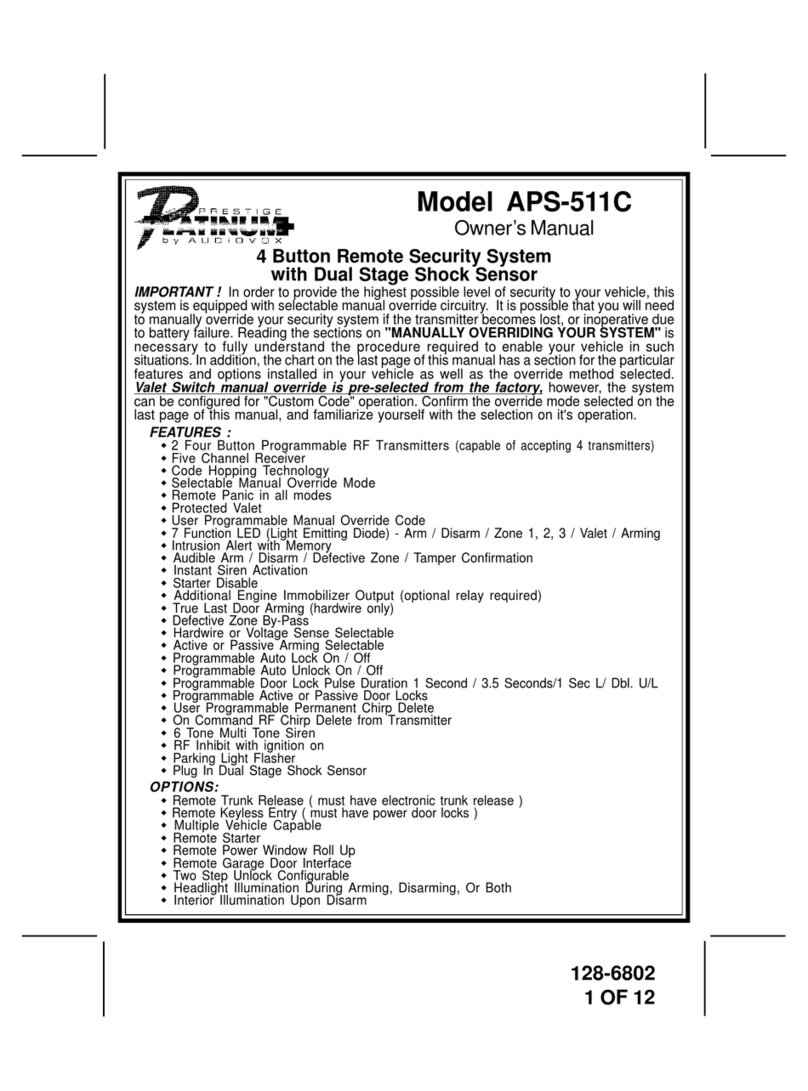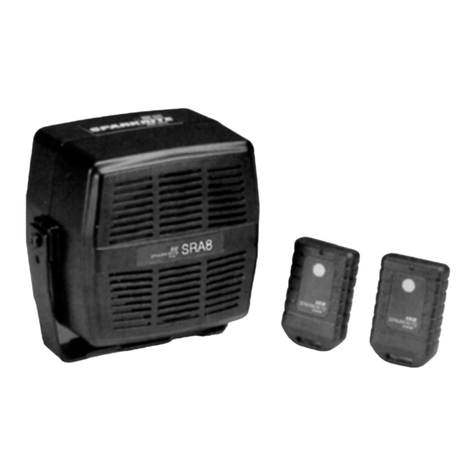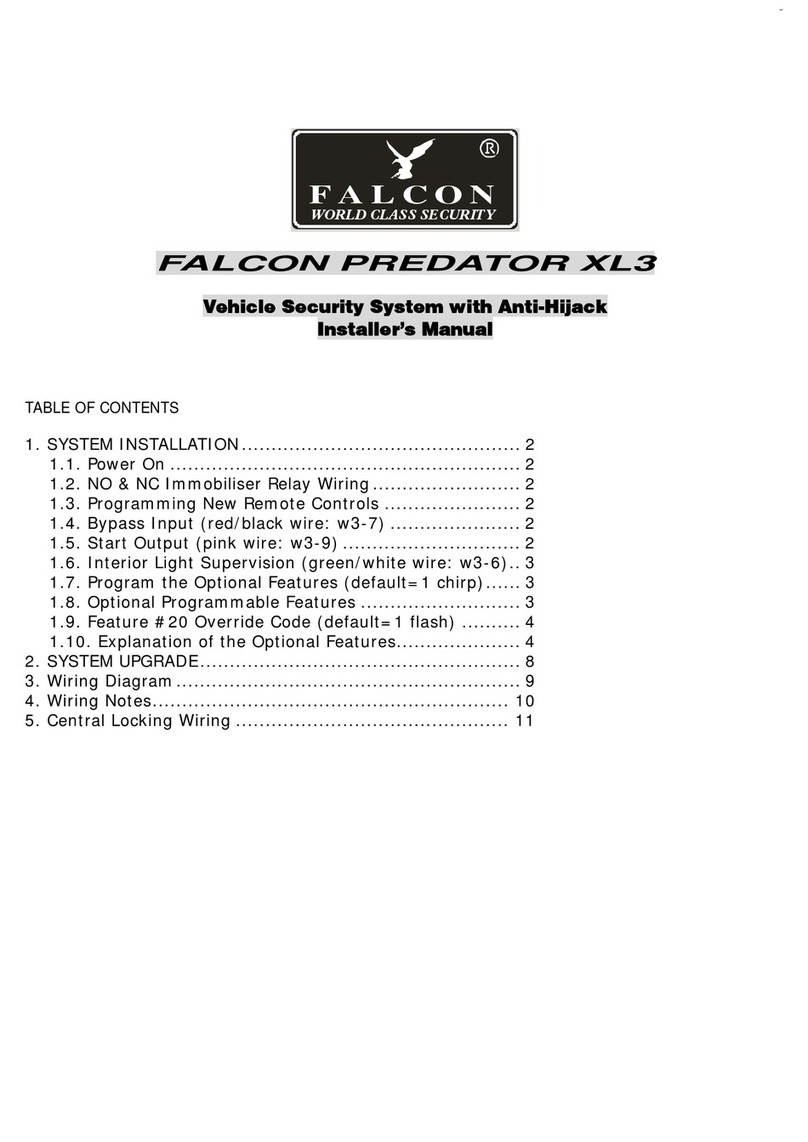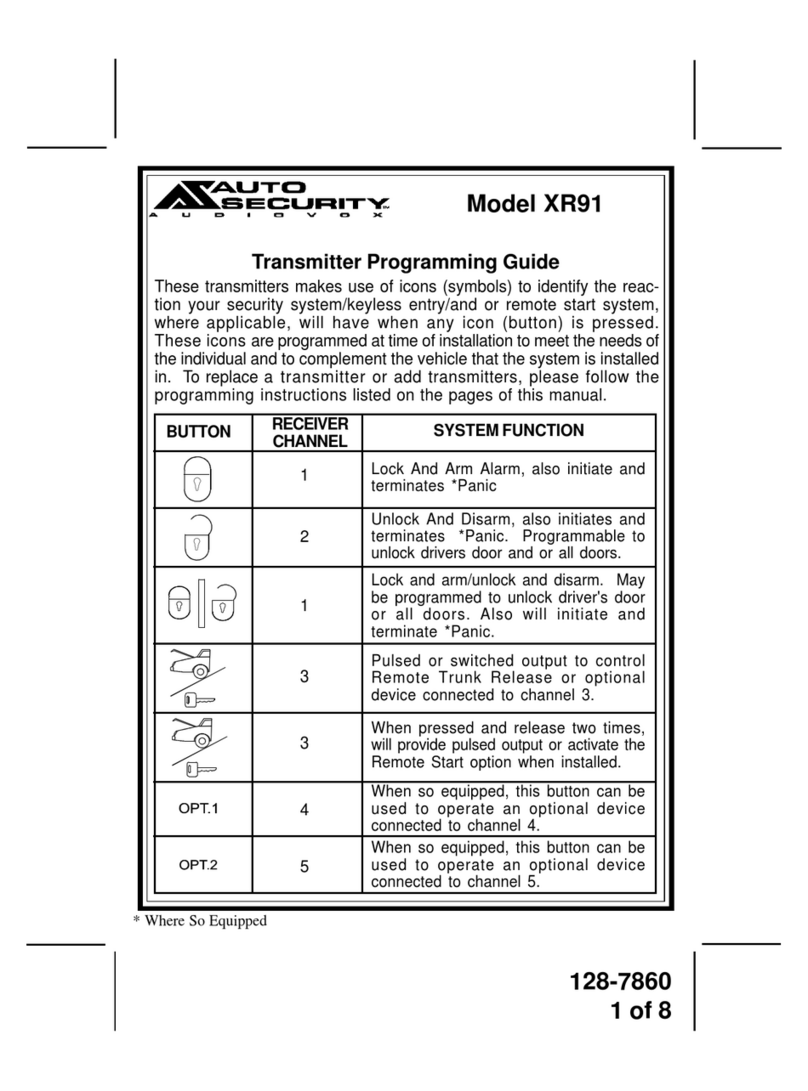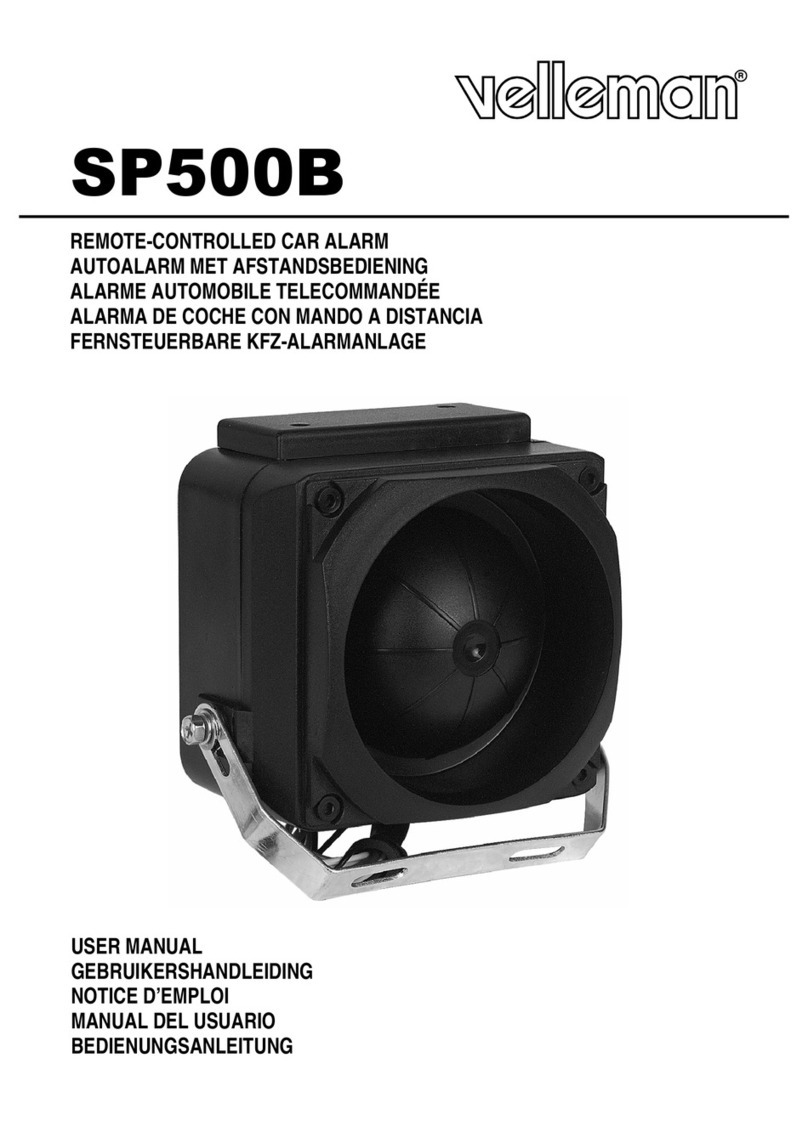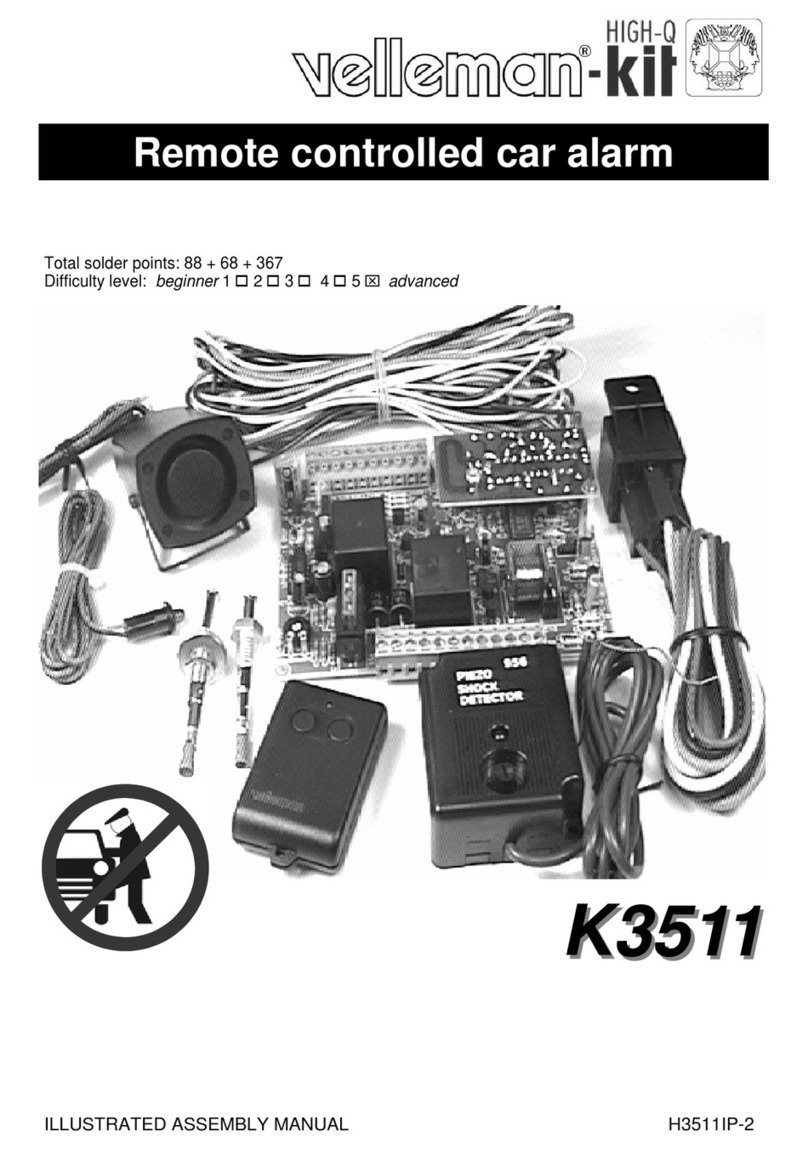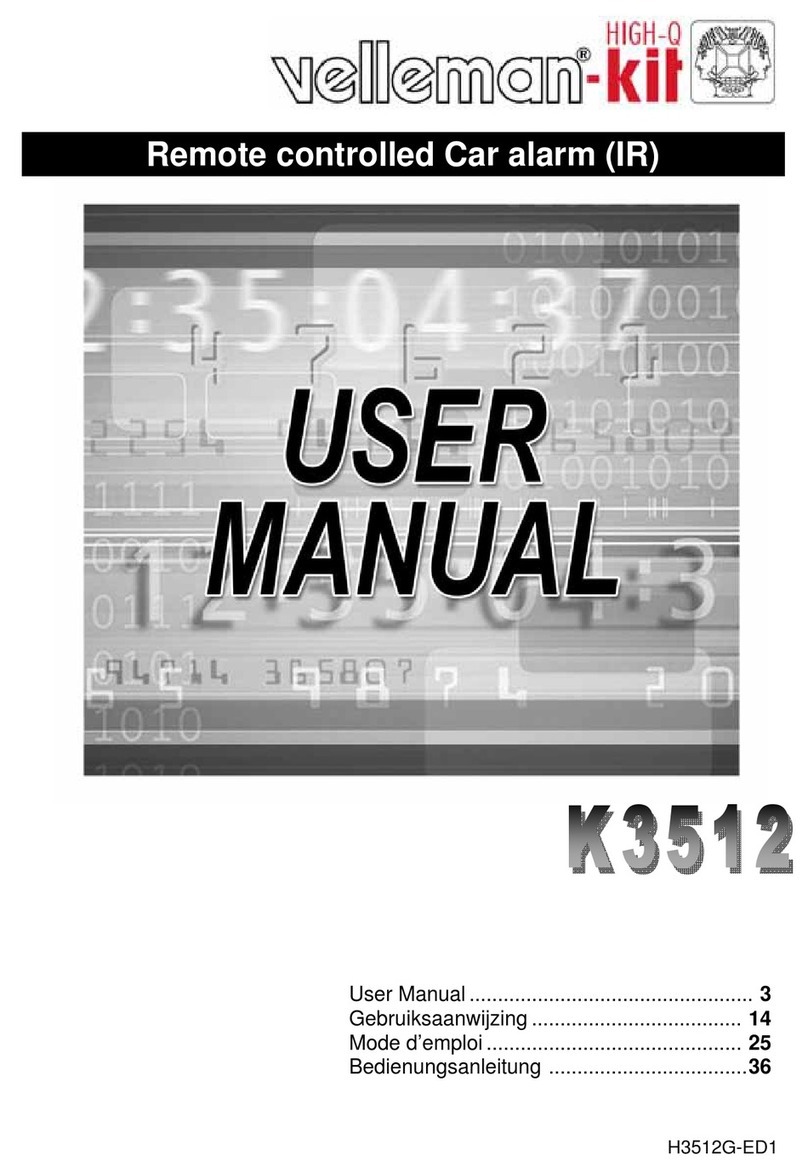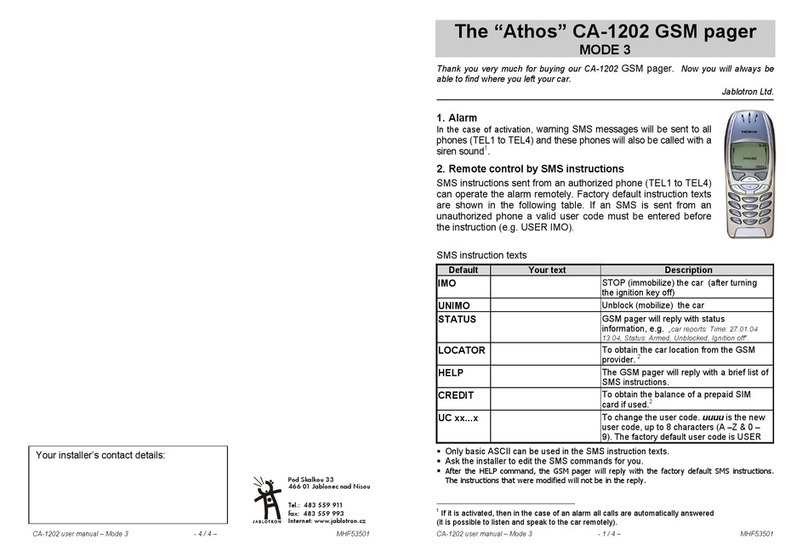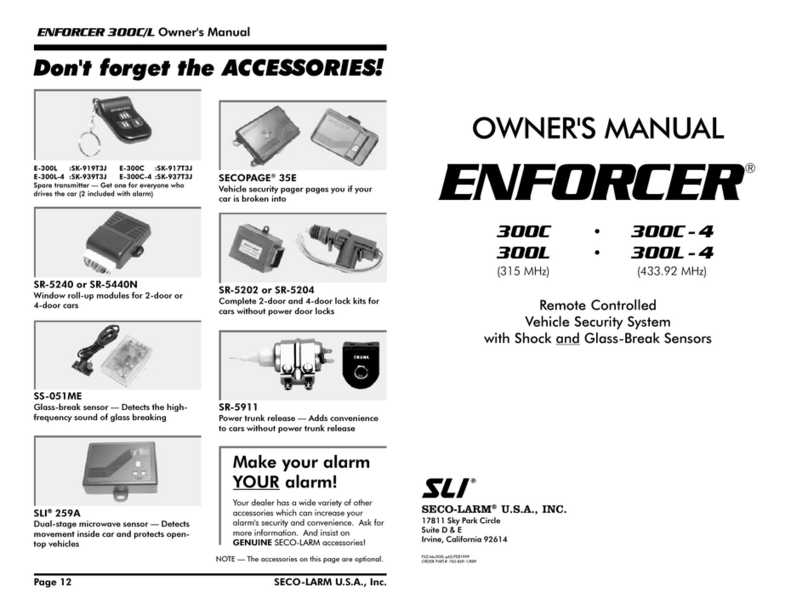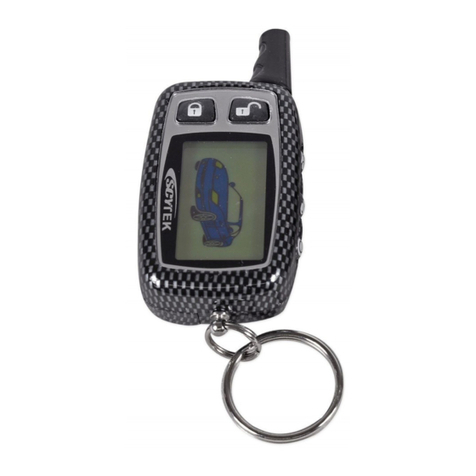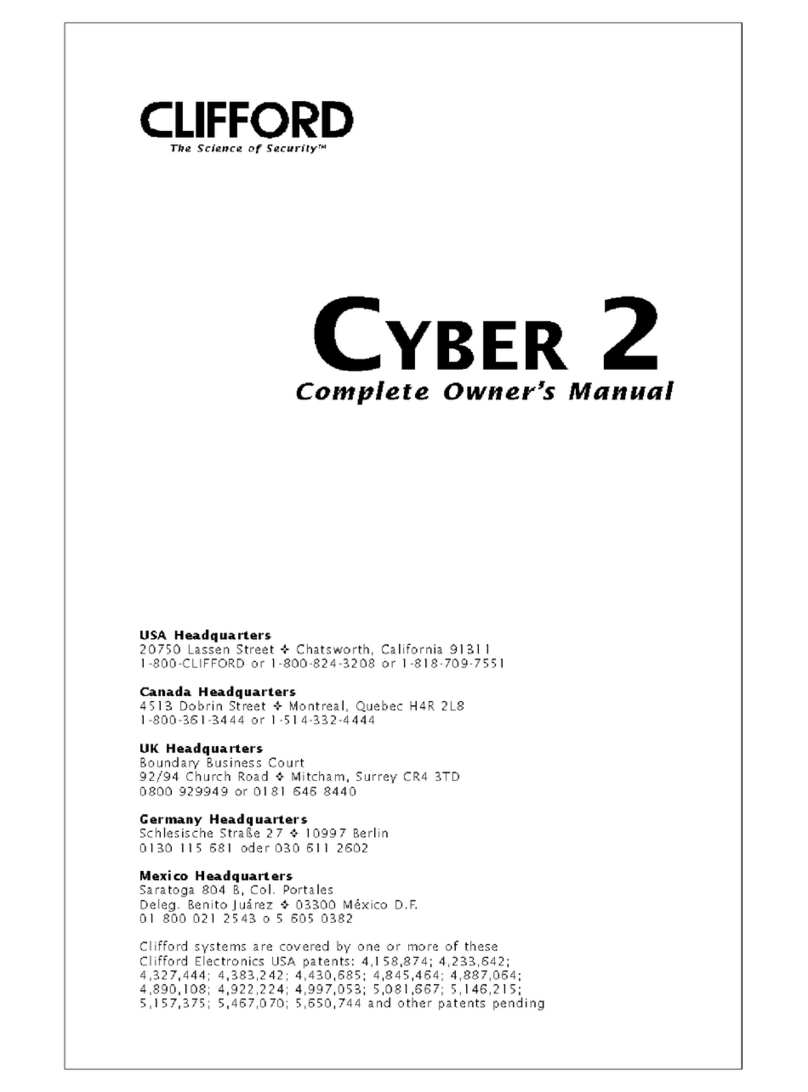
4
3. Fitting the interior siren:
The interior siren has 2 functions: to provide an audio indication when the alarm
is switched in and out, and to operate as an alarm should there be a break in. An
interior siren has the advantage that the intruder will be WITHIN the noise field,
which is almost unbearable. Mount the interior siren under the dashboard, so
that the location of the siren is not immediately obvious, but will nonetheless
produces a loud enough noise. (The siren can be tested by connecting the red
wire to the + terminal and the black wire to the - terminal of the battery).
*WARNING: the siren produces a high level of noise. If it is pointed directly
to your ear or somebody else's it may cause permanent hearing damage.
*NOTE: if an external siren is not connected, then the internal siren can also be
fitted under the bonnet. Ensure that the siren is at a slight angle so that water
cannot ingress.
4. Fitting the contact switches:
Contact switches have to be fitted if the bonnet or boot are to be protected. They
need not be fitted if the cover concerned is fitted with a light, (however the current
consumption detector should then be checked for correct operation - see further).
To protect the bonnet, the adjustable gold coloured pressure switch can be used.
Look for a smooth metal surface on the periphery of the bonnet and radiator
sealing. Drill a 7 mm hole and fix the contact to it. To protect the boot, look for a
smooth metal surface on the periphery of the boot sealing where the self tapping
pressure switch can be mounted. Drill a 6 millimetre hole and use an 11 mm socket
spanner to screw the switch into place. Underneath the contacts a wire can be
connected to the plug.
*NOTE: Ensure that the switches are pressed in when the bonnet or boot is
closed. Ensure that the switches make a good contact with the chassis.
5. Fitting the shock detector (complete module):
Fit the shock detector to the chassis in the passenger interior (under the
dashboard) or in the boot.
*NOTE: The detector must make a good contact with the chassis or metalwork of
the car, otherwise it will work poorly or not at all. The shock detector may not be
fitted outside or underneath the bonnet as it is not watertight.
6. Fitting the IR receiver module (only for K3512):
Using double sided adhesive tape, mount the receiver module to the ceiling or
underneath the dashboard such that there will be no direct sunlight on the
sensor. If you are not certain about where to put the receiver, then it is best to
wait until the entire alarm system has been fitted so that the receiver can be
tested before putting it in a permanent position.
